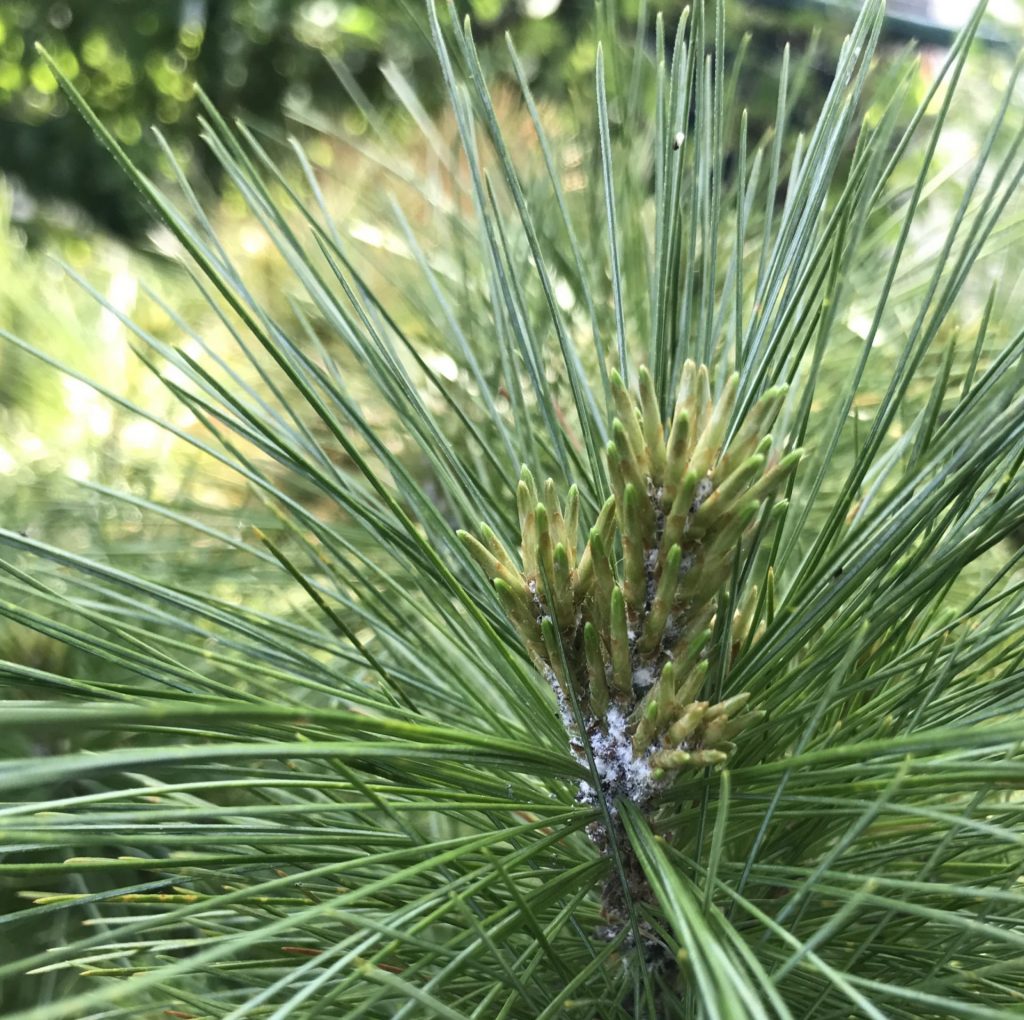
I have a small conifer standard in a dappled shade position in my Toronto garden – planted in triple mix 9 years ago. There is what looks like white mold where all the twigs join the stems. It is slowly turning the needles brown. I can find no bugs inside the ‘mold’. Sorry I can’t remember what kind of conifer this is. I pressure washed the mold off with a jet of water but it came back. Should I spray it with something chemical ?
The tree in your photograph is a pine tree, likely a white pine or Pinus Strobus L. and the white material showing at the base of the needles is not mold but rather the white woolly tufts of waxy material that is evidence of the pine bark adelgid, Homoptera: Adelgidae, an insect pest that affects primarily white pine, but also many other conifers. Inside this material, if you look closely, you may find the very tiny darker-coloured adelgids. Adelgids are a relative of the aphid, and like aphids, suck juices out of the twigs of plants. When they are present in large numbers, they can cause yellowing of needles and early dieback.
Typically, healthy trees are able to withstand a moderate infestation of adelgids. Adelgids can be controlled by vigorous spraying with water from a hose (you have already done this, but keep it up), or with applications of insecticidal soap spray. Do pay particular attention to the trunk of your tree as well, as their waxy material can also appear there. If you choose to use an insecticidal soap, the recommended timing is May, which is when the nymphs emerge, but it is still worth trying now. Spray the bark of the trunk and the major branches according to the product’s directions, as high as you can reach. You may have to spray more than once. One downside is that it is hard to determine whether the spraying has been effective because the white fluffy material will remain on the tree even if the insects are dead.
Smaller trees are, not surprisingly, affected more seriously by heavy infestations. You don’t mention whether you have fertilized your pine tree, but this is not recommended, particularly quick release formulations that produce flushes of the tender new growth that these insects prefer.
Here are links to a couple of resources that show photographs and describe the life cycle of this insect:
https://www.forestpests.org/vd/332.html

